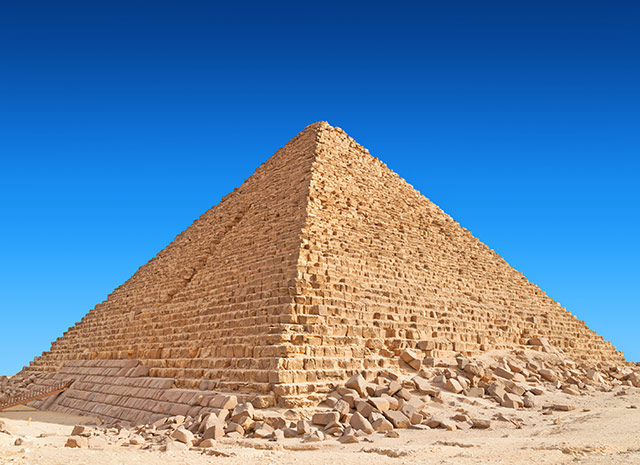Mars likely had water as early as 4.4 billion years ago, researchers say
11/12/2020 / By Virgilio Marin

Experts say that Mars most likely had water as early as 4.4 billion years ago, thanks to data from an ancient Martian meteorite discovered in northwestern Africa. In a recent study published in Science Advances, an international team of researchers revealed that certain minerals in meteorite NWA 7533 were oxidized, indicating that water was present during impact.
According to the team, oxidized minerals in the meteorite provide crucial insights into the origin of water in rocky planets like Mars and other large celestial bodies in the solar system.
Water likely occurred naturally on Mars
NWA 7533 was discovered in the Sahara Desert in 2012. This new type of Martian meteorite contained mixtures of different rock fragments called clasts — some of which were found to have been formed on Mars over 4.4 billion years ago. In particular, some of the fragments were found to have been formed on Mars 4.4 billion years ago, making them the oldest known Martian rocks found on Earth.
“This is the first time I have investigated this particular meteorite,” said co-author Takashi Mikouchi of the University of Tokyo.
The clasts were previously proposed to be the products of an early re-melting of Mars’ crust. According to the researchers, these fragments could provide insights into the conditions on the surface of young Mars. Many planetary scientists agree that there was water on the Red Planet for at least 3.7 billion years. But after performing four different kinds of spectroscopic analysis on NWA 7533, the researchers found that water, in the form of either liquid or ice, was likely present on the planet hundreds of millions of years earlier.
The researchers explained that the igneous clasts in the meteorite formed due to impacts and oxidation. Oxidation could have occurred if water was present on or in the Martian crust during a meteorite impact that melted part of the crust.
What’s more, that impact might have released a lot of hydrogen into Mars’ atmosphere, which at the time was already made up of large concentrations of carbon dioxide. According to the researchers, the hydrogen emission could have raised the surface temperatures on the planet for several millions of years and warmed it to the degree that made Mars habitable. (Related: Geological curiosity: Mars “blueberries” reveal what ancient Mars may have looked like.)
The study’s findings support the idea that water was just one of the many substances present naturally on the young planet and was not, as some scientists argue, delivered by asteroids and comets after it formed. This, in turn, could impact theories on the origin of life and the search for life beyond Earth.
Underground lakes on Mars
Earlier this year, a group of Italian researchers found that Mars might have multiple underground lakes in the planet’s south pole. Using radar data from the European Space Agency’s Mars Express – a Mars-orbiting spacecraft – the researchers detected areas of high reflectivity that indicated the existence of four bodies of liquid water. These subsurface reservoirs, wrote the researchers in the journal Nature Astronomy, are trapped under more than one kilometer of Martian ice.
The finding supports a 2018 study that claimed a large saltwater lake is hidden under the ice in the Martian south pole. While the study was met with skepticism, the claim of a large lake nevertheless gained new ground with the recent findings. What’s more, the Italian researchers said that there might be three other bodies of water around this main lake. These four reservoirs are spread over around 18.5 million acres, which is equal to roughly one-fifth of the size of Germany. The central lake is around 18.5 miles wide, while the smaller lakes are each around a few miles wide.
If these reservoirs do exist, they can be potential habitats for Martian life.
Visit Space.news for more articles about Martian life.
Sources include:
Submit a correction >>
Tagged Under:
breakthrough, cool science, cosmic, discoveries, habitable planet, Mars, Martian life, meteorite impact, origin of life, research, Space, water on Mars
This article may contain statements that reflect the opinion of the author
RECENT NEWS & ARTICLES
COPYRIGHT © 2017 DISCOVERIES NEWS





















